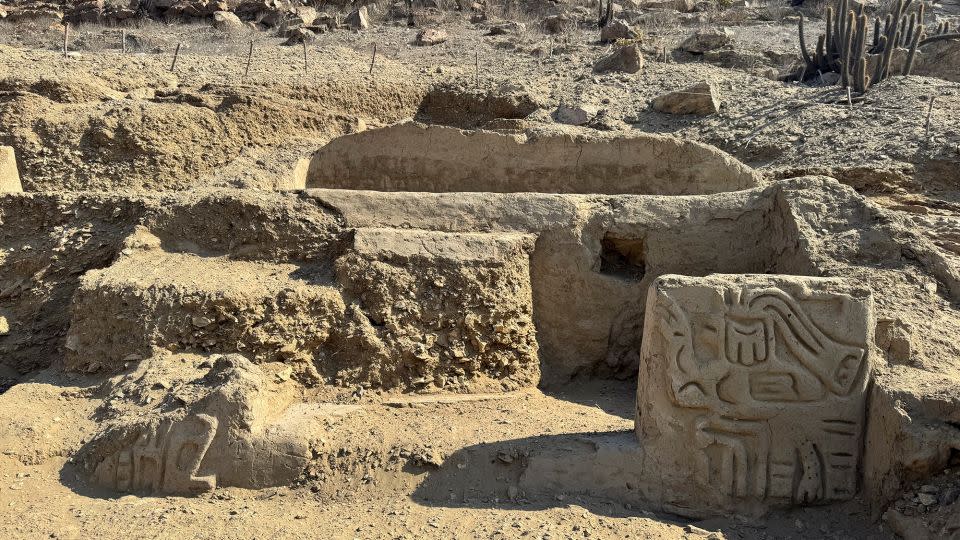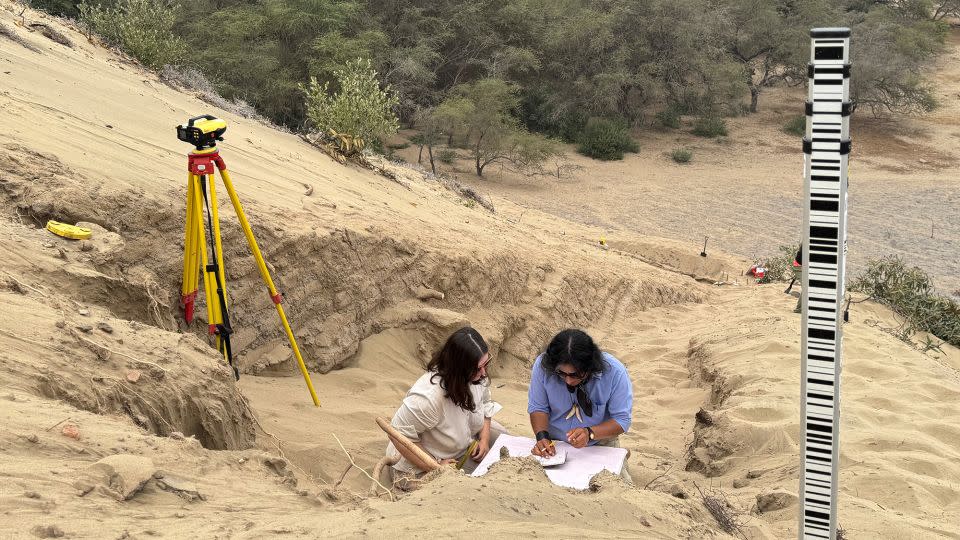Archaeologists in Peru have unearthed the remains of what they believe to be a 4,000-year-old temple and theater, shedding new light on the origins of complex religions in the region.
The team began studying La Otra Banda’s new archaeological site, Cerro Las Animas, in June. Last year, the local government warned them about looting taking place near the town of Zaña in northern Peru, according to a news release from the Field Museum in Chicago, Illinois, on Wednesday.
They excavated a plot of land about 10 meters long and 10 meters wide, finding signs of ancient walls made of mud and clay just 1.80 meters deep.
“It was so surprising that these very ancient structures were so close to the modern surface,” Luis Muro Ynoñán, a Field Museum research scientist who led the team, said in the statement.
After digging deeper, archaeologists found “a section” of a large temple, Muro Ynoñán said, adding that “one of the most exciting discoveries” was a small theater “with a backstage area and a staircase that led to a similar platform. to a stage.” ”
“This could have been used to perform ritual performances in front of a selected audience,” he added.

One of the theater’s staircases was flanked by clay panels with an elaborately carved design of a mythological bird-like creature, according to the statement. The figure resembled other images of mythological creatures dating from the Early Period, around 2000 to 900 BC, giving clues as to when the temple was built.
“The Early Period is important because this is when we begin to see evidence of an institutionalized religion in Peru,” said Muro Ynoñan, adding that the discovery “tells us about the earliest origins of religion” in the region.
“We still know very little about how and under what circumstances complex belief systems emerged in the Andes, and now we have evidence about some of the first religious spaces that people created in this part of the world,” he said.
The discoveries predate the country’s best-known archaeological site, the ancient citadel of Machu Picchu, which is believed to have been built by the Inca Empire in the 15th century, by around 3,500 years. They also predate the pre-Inca Moche and Nazca cultures, the researchers said.
“We don’t know what these people called themselves or how other people called them. Everything we know about them comes from what they created: their houses, temples and grave goods,” said Muro Ynoñan.
He added that “people here have created complex religious systems and perceptions about their cosmos,” with religion “an important aspect of the emergence of political authority.”
Muro Ynoñán said he has a “special” and “deep” connection with the discovery, as his mother and father’s families come from the region, “so it was really incredible to come face to face with these representations of an ancient god who it was so important to these ancient groups.”


Archaeologists also found several large murals painted on the walls. Muro Ynoñán collected paint pigment samples that he said he plans to analyze in the laboratory, as well as submit samples for carbon dating to confirm the age of the site.
The Andean country is home to a series of archaeological finds from pre-Hispanic times.
In August, Peruvian archaeologists unearthed a 3,000-year-old tomb that they believe may have honored an elite religious leader.
A few months earlier, more than 1,000 year old teenage mummy wrapped in a funeral package was discovered on the outskirts of the modern capital, Lima.
For more news and newsletters from CNN, create an account at CNN.com


































